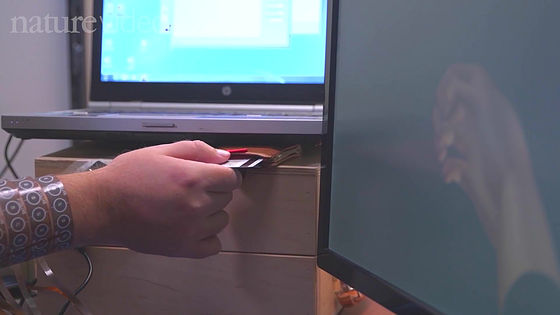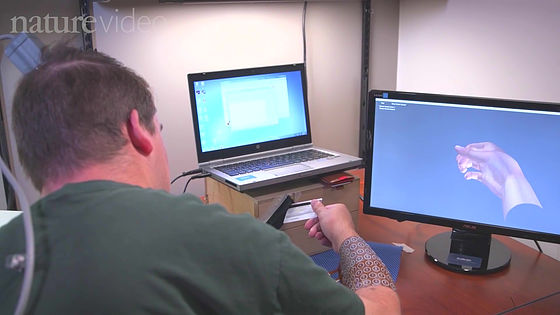What is "Neural Bypass" that a person with limb paralysis successfully moved his arm by embedding a tip in the brain?

If you have an injury to the spinal cord due to an accident or the like and an obstacle remains in the neurotransmission to the limbs, paralysis such as exercise capacity and pain sensation may occur in limbs. Because limbs do not move at all, it is necessary to help someone in every situation of life, but by embedding a chip in the brain, bypassing the signal of the brain without going through the spinal cord, controlling the right arm An example of successful revival has been reported in the Journal of Integrated Science Journal · Nature.
Restoring cortical control of functional movement in a human with quadriplegia: Nature: Nature Publishing Group
http://www.nature.com/nature/journal/vaop/ncurrent/full/nature17435.html
Chip, Implanted in Brain, Helps Paralyzed Man Regain Control of Hand - The New York Times
http://www.nytimes.com/2016/04/14/health/paralysis-limb-reanimation-brain-chip.html
Ian Birkhart who became a subject of a brain implant that bypasses nerves was a quadriplegic paralysis due to an accident at the age of 18. When he jumped into the ocean, he damaged his neck and his hands and feet can not move. Burke Heart received an experimental treatment offer from a doctor at Ohio State University two years ago to embed a tip in the brain. Mr. Birkhart told the doctor that "I would definitely participate", but Mr. Barkhart's family objected to doing surgery that is not necessary originally.
Mr. Birkhart who eventually participated in experimental treatment has now become able to act like "pour drinks into the cup" "grab the straw and stir the drink" using the right arm, and operate the guitar type controller You can play it. Mr. Birkhart said, "It is a very strange sensation to move paralyzed hands without sensation.When you move your hand, you do not know until you see with your eyes whether you are holding the palm or opening it." It is.
Currently, Mr. Barkhart can move his arm only under the laboratory's equipment. Embedded in Mr. Barkhart's brain is a chip with 96 "filaments (microelectrode)" that can record individual neuron firing. The firing pattern of the neuron is transmitted from the chip and is output to the outside through the cable connected to the back of the head. The outputted brain signal is directly transmitted to the right arm, and Mr. Barkhart can do the exercise he thought.
In fact, you can see how Mr. Barkhart is moving his arm from the following movie.
The nerve bypass: how to move a paralyzed hand - YouTube
Mr. Birkhart who became quadriplegic due to the accident. The lower body is completely paralyzed, but the movement of the shoulder and biceps is a little "C5" level paralysis patients.

A code telling the signal to Barkhart's right arm will be rolled up.

Then I succeeded to lift the wrist with a quick as follows.


I am playing guitar games.

Equipment is connected to the chip embedded in the brain like this. The position where the chip is embedded depends on the brainMotor fieldArea called. I have spent half of this research period before finding the exact place.

Mr. Barkhart damaged the spinal cord, so the signal from the brain is not transmitted to the limbs. Therefore, by outputting the brain signal to the outside and sending the signal directly to the arm through the equipment, it is possible to avoid the spinal cord transmission and enable exercise.

It is a special software developed by Battelle Memorial Institute participating in the research that is decoding the signal of the brain. Mr. Birkhart continued to work on entering the firing pattern of neurons moving hands to this software every week.

As a result, Barkhart became able to perform complex movements with his right arm. Here is the place that grabbed the glass and the contents were transferred to another cup.

Pinch the straw with your fingers ......

I could also stir the contents of another cup.

Pull out the card from the wallet ... ...

Reading with a reader, etc. are also possible. In addition, these facilities can only be used by Mr. Barkhart for now and there is no general purpose. Although it can only be used in laboratories, the research team said that it aims to "mobilize equipment" so that it can be used anywhere. This research is likely to be the hope of people with similar obstacles as a successful example in which people with quadriplegia can recover their motor function for the first time.

Related Posts:







